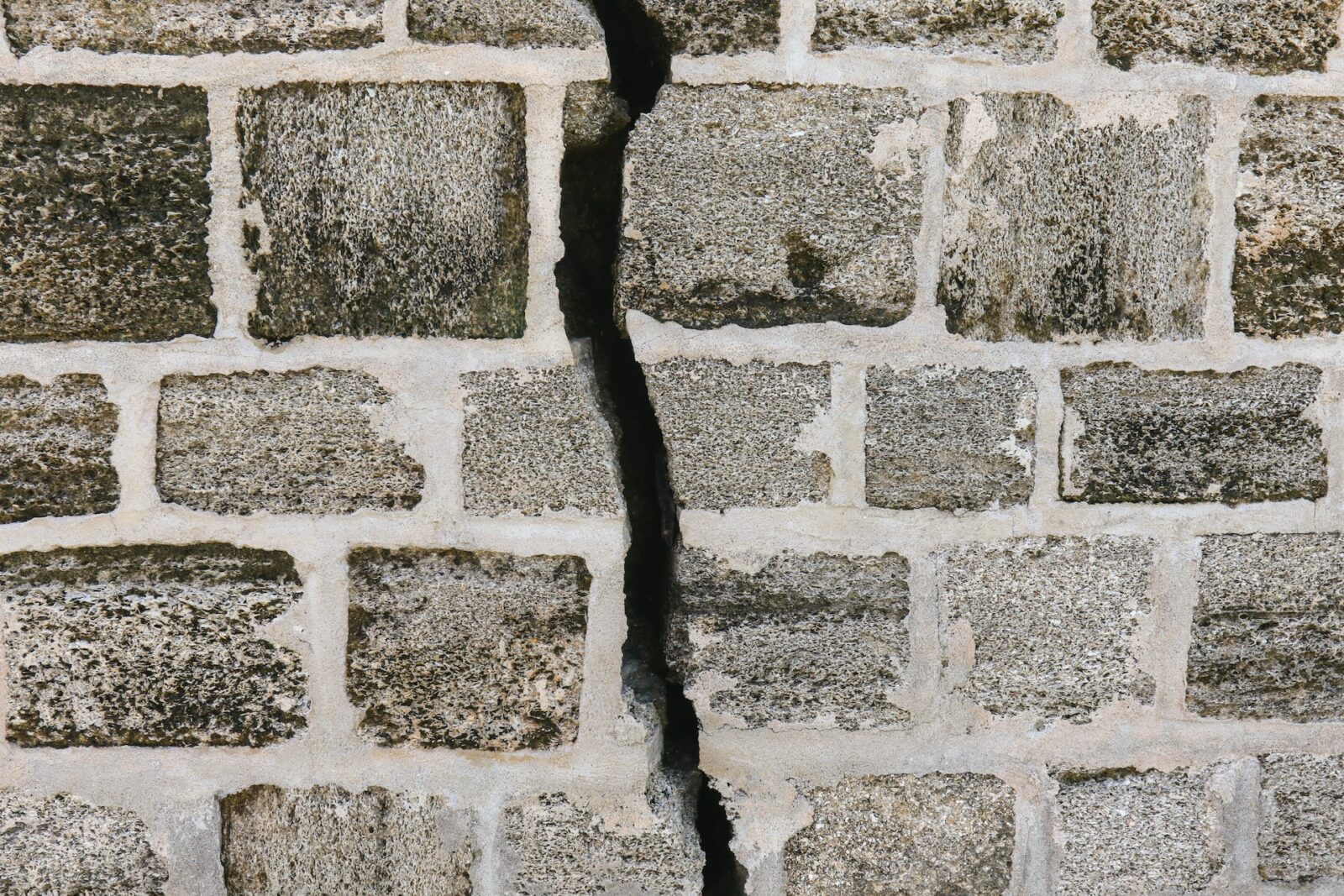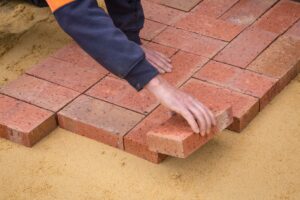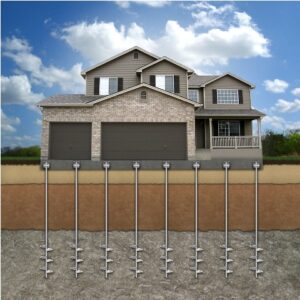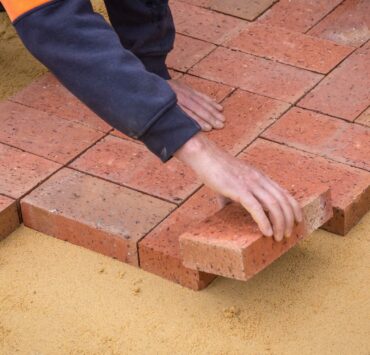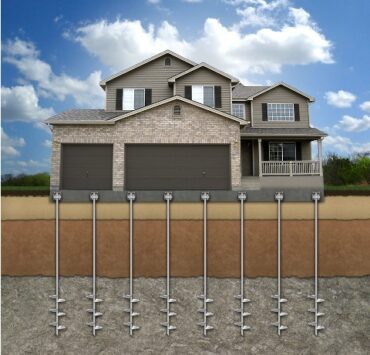A house with a sinking foundation can turn into a financial black hole. That’s why it’s worthwhile in the long term to tackle foundation problems proactively, preventing them from escalating into more significant problems.
While some signs of a compromised foundation, like cracks in the walls or bouncy floors, are apparent, others may be subtler and require a closer investigation. Keep an eye out for both the obvious and silent indicators to ensure your home’s stability.

About Foundation Problems
In the realm of homes, foundations vary widely. Various types, such as basement foundations, crawlspace stem walls, concrete slab foundations, wood foundations, and pier and beam foundations, are commonly used in the United States. Each type is prone to distinct foundation problems, and external factors can also exert influence. Regions with higher annual precipitation, for instance, may see increased vulnerability of foundation walls to damage.
Typical concerns encompass foundation crumbling or sinking, floor cracks, gaps in the foundation, sloping floors, wall cracks, a leaning chimney, and doors that stick.
Signs of Foundation Problems to Look Out For
1. Exterior Wall Cracks
Hairline cracks in exterior walls are common and often not indicative of serious foundation issues. However, a zigzag pattern, large cracks, or an outward-sticking foundation can signal a more significant problem. Vertical cracks may result from normal settlement, while horizontal cracks are more concerning. Factors indicating expert examination include cracks wider than a quarter of an inch, rapid crack growth, and bowing or displacement of foundational blocks.
2. Interior Wall Cracks
Similar to exterior walls, many cracks in interior walls are harmless, often caused by factors like plumbing leaks or humidity. Crumbling, bowing, or sagging walls suggest issues from below. Diagonal cracks, floor or ceiling-running cracks, and peeling wallpaper can also point to foundation problems.
3. Bouncing Floors
Squeaking, bouncing, or sagging floorboards may indicate house foundation problems. Finished floors with bouncing may signal settled foundations or rotted structural beams. Look for cracks in concrete slab floors, especially in basements or crawl spaces.
4. Cabinets or Counters Separated From Walls
Uneven floors can cause cabinets and countertops to separate from walls or slope. If these elements were once firmly attached but show signs of detachment or sloping, there may be a foundation issue.
5. Mildew Smell
Persistent mildew smells in basements or crawl spaces could result from moisture seeping through foundation cracks. This moisture can lead to rot and attract pests, creating a troublesome cycle.
6. Warped or Cracked Siding
Foundation problems, along with moisture, weather events, or pests, can lead to siding issues. Check for gaps between planks, growing cracks along exterior walls, and spaces between siding and window or door frames.
7. Sinking Ground
If water increasingly pools around your home’s foundation, it could indicate landscape erosion or a more significant problem with the foundation sinking. Proper grading helps prevent moisture from compromising the foundation’s integrity.
8. Sticking Doors
Foundation issues causing unevenness may result in doors not shutting properly or getting stuck. While some seasonal door sticking is normal, persistent issues may require inspection of the foundation below the problematic doors.
9. Drainage Issues
Uneven foundations may lead to plumbing problems. House foundation problems can cause pipes to back up or become unbalanced, restricting flow. If drainage issues arise, inspect walls, siding, floors, and foundation for additional signs of trouble.
Foundation Repair Cost
Foundation repair cost ranges between $5,000 to $10,000 on average. However, if these issues extend their reach to other areas of your home, the costs can escalate further. Understanding how to inspect for foundation problems is a vital aspect of proactive home maintenance.
Foundation Problems VS Settling, What Are The Differences
Foundation settling involves slight movements of your home’s foundation, typically downward into the soil within the initial years of construction. While settling imposes some additional stress on the concrete, it generally does not compromise the integrity of the structure.
On the contrary, foundation problems can be significantly more serious, resulting in instability, larger cracks in the foundation, and associated issues such as water intrusion, pest infestation, foundation sinking, and more.
| Foundation Settling | Foundation Problems |
| No loss of structural integrity | Structural damage is possible |
| Normal and expected | Arises because of an unexpected issue |
| Occurs within first few years of construction | Can happen at any time |
| Repairs often not required | Stabilization or other repairs necessary |
| Symptoms include hairline cracks in foundation | Symptoms include wide cracks, sinking, water intrusion, and more |
Symptoms of Foundation Settling
- All foundations settle and form hairline cracks, usually within the first few years of construction.
- Hairline cracks are less than ⅛-inch wide, with no side rising above the other. They often occur on slabs or foundation walls in crawl spaces or basements.
- These cracks typically stop growing and widening after initial formation.
- Thin hairline cracks on concrete block walls, resembling a stair step, may indicate normal settlement or potential structural damage.
Addressing Hairline Cracks
- Hairline cracks from foundation settling rarely allow visible water into the under-home area.
- If moisture is present along the crack, it’s advisable to seal it with a foundation crack sealant or epoxy.
Symptoms of Foundation Problems
- Foundation problems often manifest as wider cracks, exceeding ⅛ inch, and may persist or develop long after construction.
Types of foundation cracks that raise concern and are rarely indicative of settlement include:
- Horizontal cracks on foundation walls
- Diagonal cracks on foundation walls
- Stair step cracks on walls rounding corners
- Cracks spreading across room corners or from the slab to concrete walls
Moisture-Related Signs of Foundation Issues
- Visible water coming through structural cracks is more likely in cases of foundation problems.
- Moisture-related issues include pest infestation, heavy or moist air in the under-home area, and increased energy bills due to interior moisture.
Note: Prompt attention to wider cracks and moisture-related symptoms is crucial for addressing potential foundation damage.
How to Fix Foundation Problems?
| Type of Repair | How it Works | Permanence |
| Steel Piers |
|
Long-term or permanent |
| Helical Piers |
|
Long-term or permanent |
| Concrete Piles |
|
Long-term or permanent |
| Concrete Piers |
|
Long-term or permanent |
| Slab Jacking |
|
Temporary or permanent |
| Shimming |
|
Temporary or permanent |
| Sealing Cracks |
|
Temporary |
When to Call a Professional?
When dealing with foundation issues in your home, it’s wiser to err on the side of caution. If left unattended, an unstable foundation not only becomes more costly but also more challenging to remedy over time. If your home shows signs of at least two of these foundation issues, it’s likely advisable to seek the expertise of a professional to provide peace of mind, and potentially safeguard your wallet.
Does Home Insurance Cover Foundation Problems?
Yes, certain home foundation problems are covered by home insurance.
Foundation Repairs Covered by Home Insurance
Homeowners insurance provides coverage for the repair of a house foundation in the event of sudden and unforeseen issues. Covered problems that can damage your foundation include:
- Heavy objects, such as trees falling on your home
- Accidental and sudden water damage, such as that from a burst pipe
- Windstorms
- Tornadoes
- Home fires and wildfires
- Vandalism
- Powerful lightning strikes
- Sudden and accidental events, like a driver crashing into your house or an explosion caused by a gas leak.
Foundation Repairs Not Covered by Home Insurance
Home insurance excludes coverage for foundation damage attributed to aging materials, earthquakes, or flooding. Gradual foundation collapse over time is also not covered.
Additional exclusions from coverage include:
- Flooding (requires separate flood insurance).
- Homeowner negligence, such as failure to prevent water seepage or tree roots from affecting the foundation.
- Shoddy construction.
- Earthquakes (can be covered by a separate earthquake insurance policy).
- Natural wear and tear over time, encompassing settling, bulging, shrinking, and cracking of the foundation.
